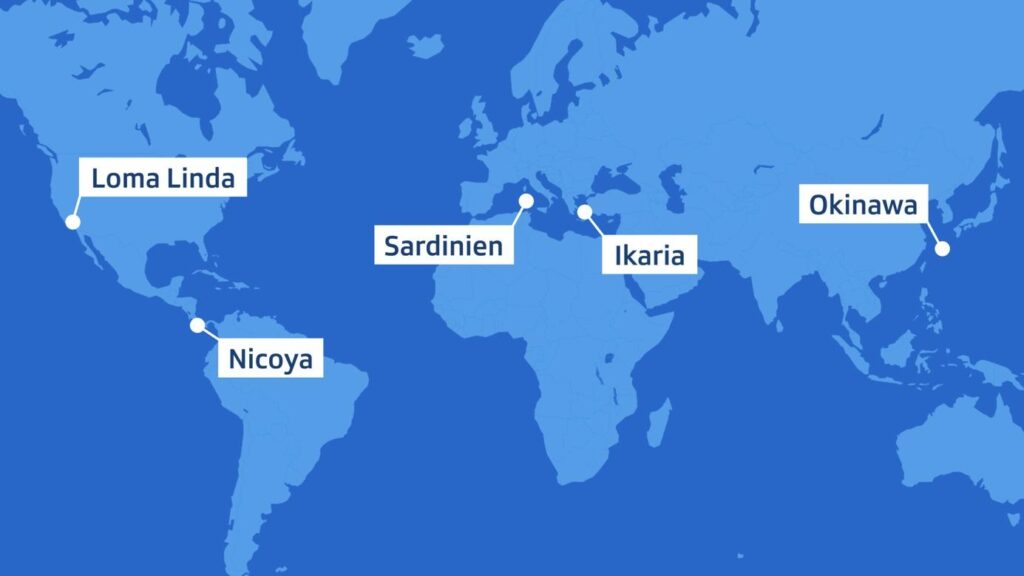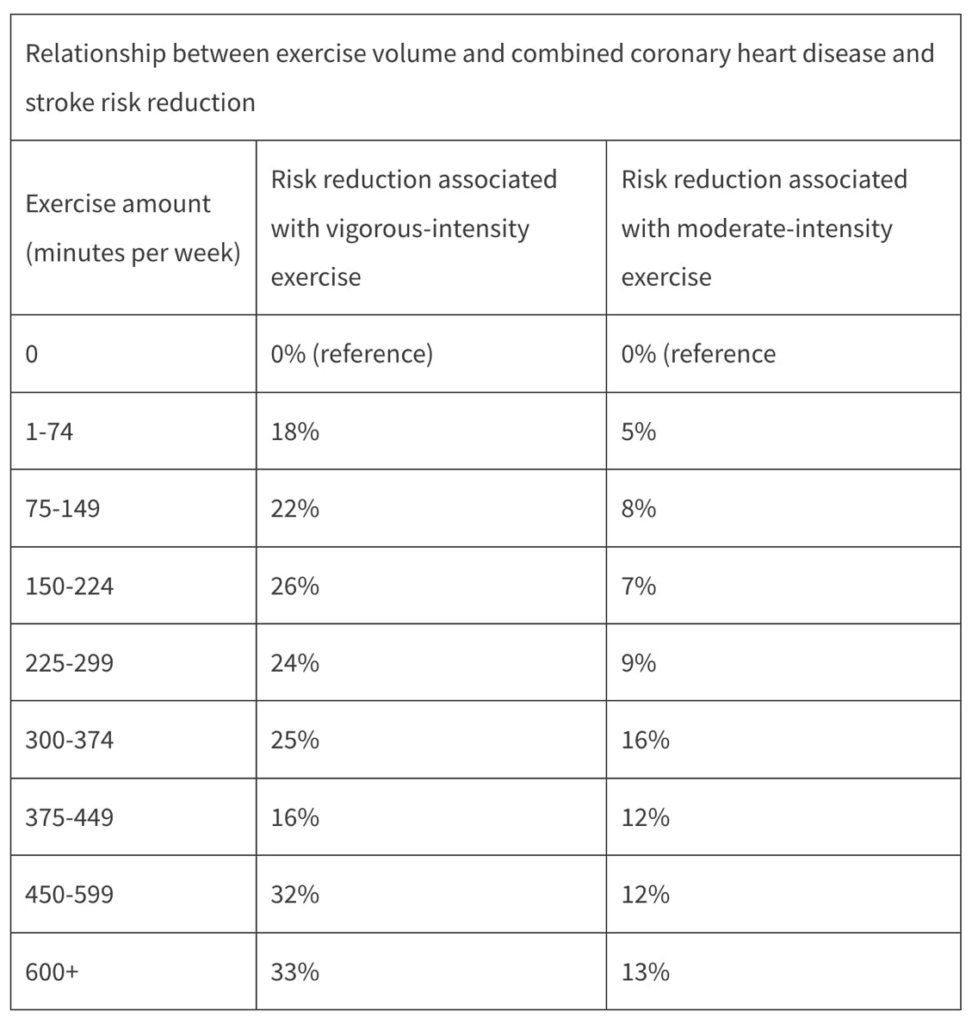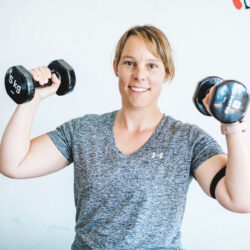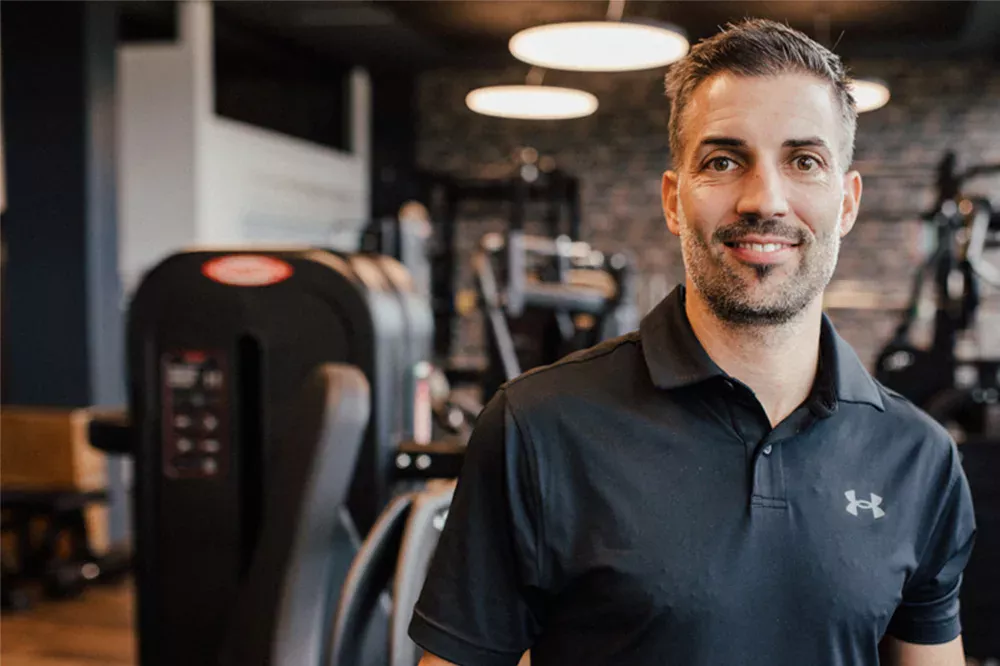Longevity – How to Live a Long and Healthy Life!
Longevity, defined as “the length or duration of life,” has long been the focus of research and science. But is it worth striving to live as long as possible? In my opinion, the goal should be to live as long as possible in good health, because who wants to spend the last years of their life on a walker or in bed? Find out more in this post!
Blue Zones — what are they and where can you find them?
The term “Blue Zone” was coined by Dan Buettner in 2005 to describe regions and populations where people live longer than average.

In Nicoya (Costa Rica), for example, there are 61 people over the age of 100 (as of the end of 2022). In two mountainous regions of Sardinia, 15% of people live to be over 90, and in Ikaria, an island in Greece, 1.1% of people live to be over 90. The European average is 0.5%. That is more than double.
What similarities do we find in the Blue Zones?
The most obvious similarity is isolation from other areas. They are either islands, peninsulas, or isolated regions. In the case of Loma Linda, its religious community also provides a degree of isolation. Many residents of Loma Linda belong to the Adventist Church, a free church in the US.
All Blue Zones are therefore exposed to little influence from the “modern” world. As a result, they…
… consume little to no processed food, but instead grow and process their own food.
… have a very active, exercise-intensive daily life.
… have a vibrant social life that emphasizes family and friends.
… have a sense of purpose in everything they do and in their existence.
The impact of genetics on age and health
Considering that only about 10% of aging is genetic, what other factors contribute to a long and healthy life?
Weston A. Price is the “Darwin of nutrition. As early as 1938, as a dentist, he traveled around the world to remote regions to see how the dental and general health of these populations was faring. He made some very exciting discoveries, which he describes in detail in his 500-page book.
What is the diet for a long and healthy life?
The Inuits were and are known for their strong immune systems. They never brushed their teeth and had perfect teeth even in old age. The mineral-rich diet of caribou and whale meat, as well as algae and foraged berries, protected their teeth from bacteria. Their diet contained 5.8 times more calcium and phosphorus, 2.7 times more iron, 4.3 times more magnesium, 1.5 times more copper, 8.8 times more iodine, and 10 times more fat-soluble vitamins, including vitamins A, D, E, and K.
The Tonga, a Polynesian tribe, replaced coconut meat with white flour during World War II and tooth decay went from 0.6% to 33.4%!
Processed food contains low minerals and vitamins
Weston A. Price concludes that it is primarily processed foods, with their low mineral and vitamin content (especially vitamins A and D), that lead to dental problems, as well as modern lifestyle diseases such as arthritis and cardiovascular disease. Even white flour today has only 20% of the calcium and phosphorus content of the original grain. The same goes for whole grains.
He was also convinced of the importance of meat and fish. None of the indigenous groups ate an exclusively vegan diet. A vegan diet does not provide enough vitamin D, and artificial vitamin D does not have the same composition and effect. For example, the consumption of fish eggs or salmon sperm helped to increase fertility and baby health.
The importance of exercise and strength training
As we can see from the people in the Blue Zones, an active lifestyle is a key factor in living a long and healthy life. For this reason, the so-called NEAT (non-exercise activity thermogenesis) should be increased. Examples of this can be found in the last section.
Not only NEAT, but also EAT (Exercise Activity Thermogenesis) should be increased. This is voluntary movement in the form of exercise. Strength training, in particular, helps to maintain muscle mass, prevent injuries, maintain independence into old age, and increase metabolism.
Training has also been shown to reduce all-cause mortality. The following graph illustrates the relationship between training intensity and time (per week) and the reduction of coronary heart disease and heart attacks.

Conclusion on Longevity
- The key to a long and healthy life is a diet of unprocessed foods rich in vitamins and minerals.
- Food should be locally sourced and not imported from far away.
- To get high levels of minerals and vitamins, we need to leave the soil fallow at times, as it is depleted today.
- Chemicals such as glyphosate, which have been proven to be carcinogenic, must be banned.
- Animals should be better treated and fed. For example, inadequately dried hay loses chlorophyll, which reduces the vitamin content. This affects the quality of meat, butter, milk and other products.
- The consumption of animal organs, especially the liver, should be reintroduced, as these store vital fat-soluble vitamins. Bone marrow and fish eggs should also be included in the diet.
- Liquids should be limited to water, unsweetened tea or homemade vegetable juices, and coffee (black). Alcohol should be reduced as much as possible.
- Walk or cycle more instead of taking the bus or tram, and take the stairs instead of the elevator or escalator. Standing at work is better than sitting, and exercise should be included in your schedule.
- Stress factors, sleep duration and sleep quality should be analyzed and improved if necessary. The same goes for digestion—is it normal or is it normal for YOU?
- Don’t drink from plastic bottles or eat from heated aluminum packaging and check cosmetics and creams with Toxfox.
- Detox, but do it right. No juice cleanses or laxatives, but saunas.
- Stay positive. Laugh with friends and find your purpose in life and work.
Cheers to a long and healthy life!
SOURCES
- https://www.srf.ch/news/gesellschaft/hohe-lebenserwartung-blue-zones-der-schluessel-zum-langen-leben
- https://www.strongerbyscience.com/exercise-longevity/?ck_subscriber_id=693099105
- Ernährung und körperliche Degeneration, Weston A. Price, 2020.
Challenge of the Month
What Clients Say





















